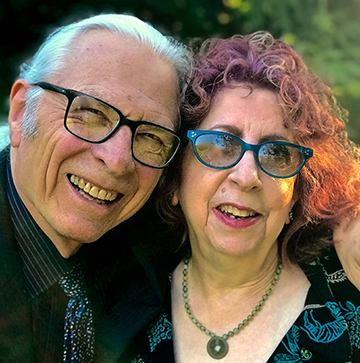THE UNFETTERED CRITIC
By Paula Block Erdmann & Terry Erdmann
What Becomes an Idol Most?
Benjamin Franklin once wrote, “In this world nothing can be said to be certain except death and taxes.” We would add to Ben’s short list one more item—the fact that every one of us thinks he or she sounds pretty darned good when singing in the shower.
 And that, members of the choir, is the concept behind one of the highest-rated shows on television. As host Ryan Seacrest shouts over the rising theme music at the start of each episode, “THISSSSSS is American Idol.”
And that, members of the choir, is the concept behind one of the highest-rated shows on television. As host Ryan Seacrest shouts over the rising theme music at the start of each episode, “THISSSSSS is American Idol.”
We admit it—we like American Idol, and we’re not alone. The January 17, 2013 issue of Forbes Magazine reports that it’s been America’s most watched program for seven consecutive years. Not bad, considering that the show is dedicated to demonstrating why most of us should shut up when we soap up.
Idol’s premise is simple: the producers scour the nation looking for young hopefuls, aged fifteen to twenty-eight, who are absolutely confident that they can be the next big singing star. There’s no shortage of contenders; the hyper eager crowds have grown so large that the producers have to book such venues as Dodger Stadium, the New Orleans Arena and the Alamodome for the highly publicized yearly tryouts. As the hopefuls “sing” their sweaty damnedest, viewers cringe at the often-embarrassing shrieks and growls, but cheer (and even tear up) when true potential shines through. A small percentage of the masses move on to the next two stages of the competition—“Hollywood week” and “Vegas week”—where they’re put through daunting exercises that whittle their numbers still further. During these initial stages, a panel of judges sifts through escalating performances until they narrow the songbirds to a group of semi-finalists, most of whom are pretty darned good.
About those judges: They’re an added sideshow to this extravaganza. People tune in as much to see them as the contestants. The original judging group consisted of: music executive/manager Simon Cowell, a.k.a., the acid-tongued British guy in the t-shirt that viewers loved to hate; former Laker Girl cum pop singer/choreographer Paula Abdul, eternally ditsy, eternally sympathetic…and maybe eternally loaded; and record producer/music manager Randy Jackson, generally a voice of reason, if a little too prone to refer to all contestants as “dawg.” Over the years, judges (with the exception of Jackson) have left the show and been replaced with various celebrities. This year we have Jackson, Mariah Carey, Keith Urban and Nicki Minaj—an interesting mix. They do the job they’re supposed to do: point out to the audience what’s good or bad about a performance, narrow the ranks, and nudge the at-home audience’s sympathies toward contestants they particularly favor.
But once the show gets to the group of semi-finalists, the celebrity judges are relegated to a somewhat diminished role of commentators/cheerleaders. Now the public, via texts and phone calls, gets to take over the actual judging process. It’s at this point, we admit, our favorite part of the season is over. Vox populi may have its merits, but not when the majority of the “populi” seems to be a whole lot of teenagers with a tendency to vote not so much on the musical merits of the contestant, but on his or her cuteness factor.
In the end, this odd mixture of “reality” and “produced” programming is surprisingly entertaining. Jackson, the only judge who’s survived all twelve seasons, calls America Idol “the best show of its kind ever in the history of television.” Say what? Let’s step back to look at that history just a bit before voting. In fact, let’s go back to radio. Remember radio? Well, once upon a time…
Major Bowes’ Original Amateur Hour aired across America from l934 to l948. The Library of Congress still holds the applications of 7000 contestants who appeared on the show. Among those listed: Teresa Brewer, Stubby Kaye, Beverly Sills and a group called “The Hoboken Four, featuring Frank Sinatra.” Not so bad, huh, Randy? When Major Edwin Bowes died in l945, his assistant took over as emcee with Ted Mack’s Original Amateur Hour. Mack moved the show to television in l948 where winning contestants included Gladys Knight, Pat Boone, Ann-Margaret and Tanya Tucker. Again, not bad.
Various smaller incarnations of the talent show format popped up from time to time before American Idol took center stage. We’re glad that it did. Although we thought for a time that the show had jumped the shark, it continues to reinvent itself in interesting ways. And over the years, Idol has discovered and promoted a number of real stars, including Kelly Clarkson, Carrie Underwood and Jennifer Holiday. We’re not yet sure that any of them has the career staying power of Frank Sinatra.
But we’re willing to keep tuning in to find out just who might.
Paula and Terry each have long impressive-sounding resumes implying that they are battle-scarred veterans of life within the Hollywood studios. They’re now happily relaxed into Jacksonville.
 Paula and Terry identify as writers, with an ever-increasing number of published works to support the supposition. They live a primarily pastoral life in the enchanted town of Jacksonville.
Paula and Terry identify as writers, with an ever-increasing number of published works to support the supposition. They live a primarily pastoral life in the enchanted town of Jacksonville.
I guess I would be one of the public that does not watch this program. I see no use in it or others like it. I put them in the category with soap operas. To each his own I guess! Thank you for allowing me,my thoughts.